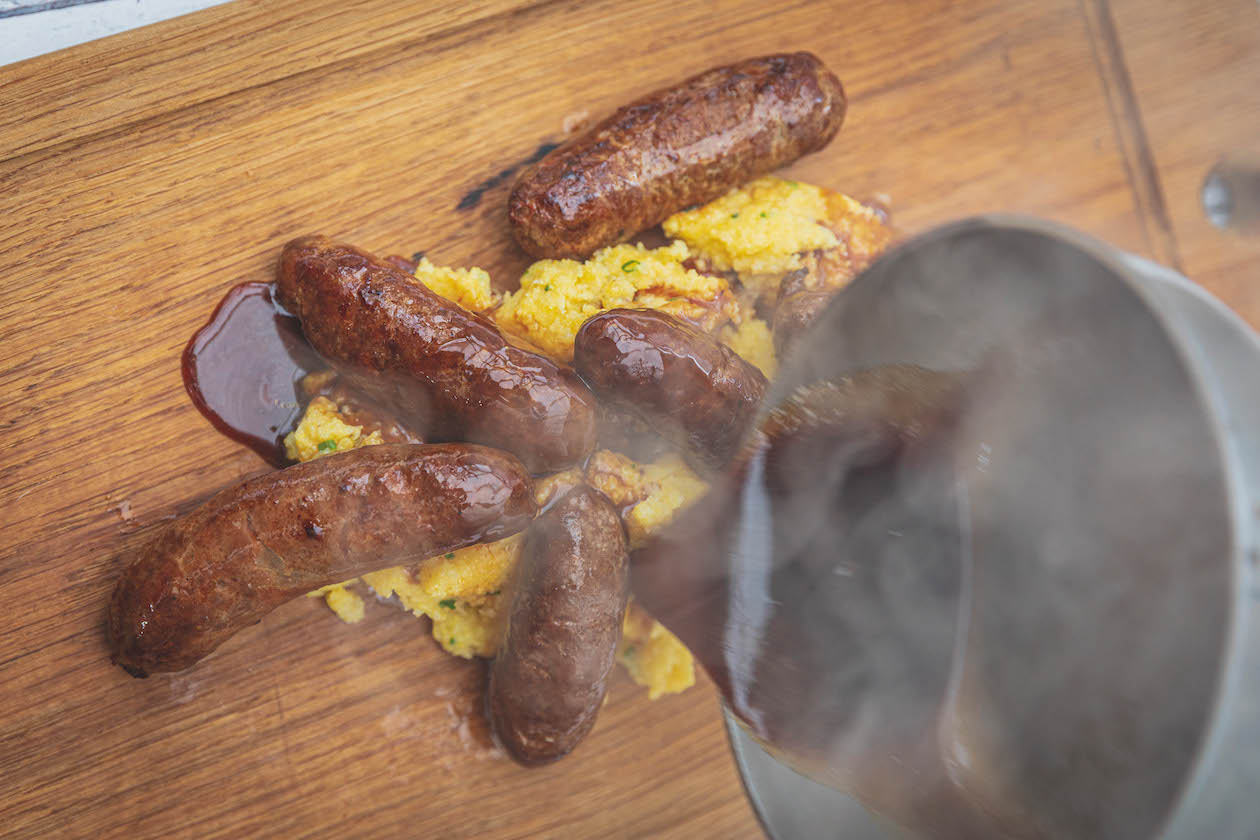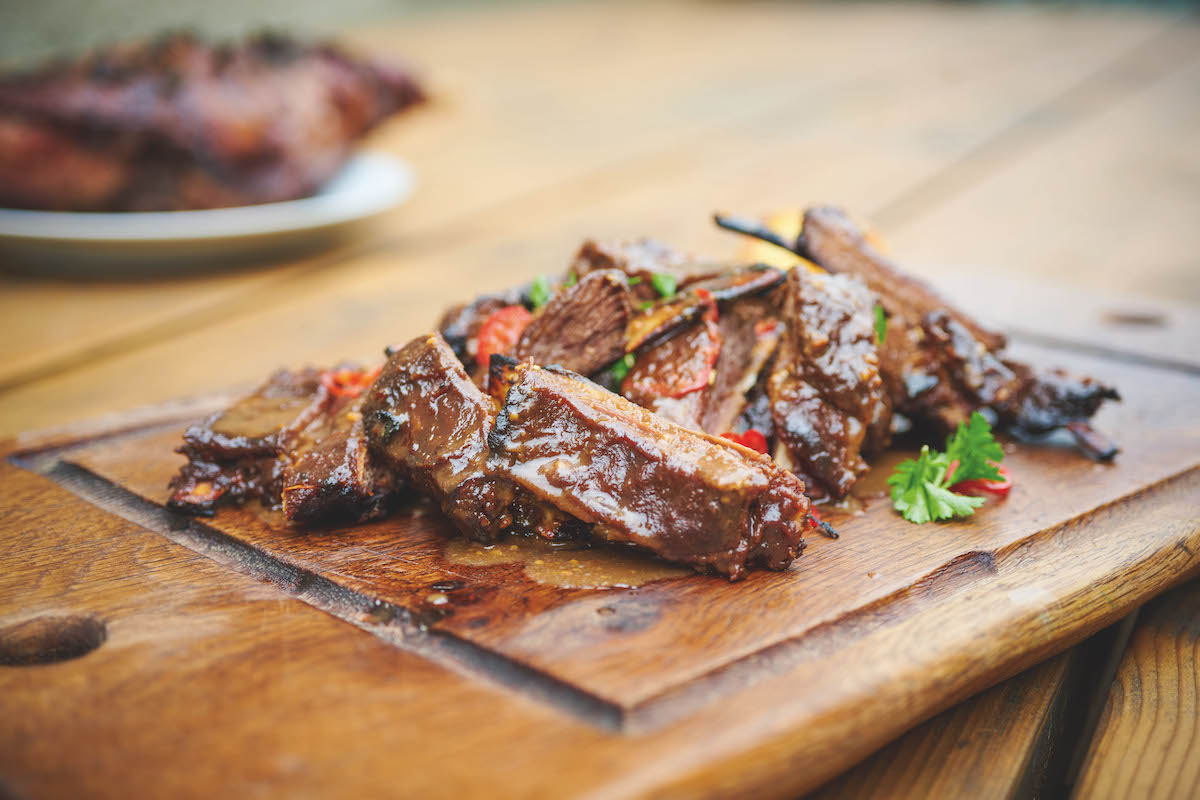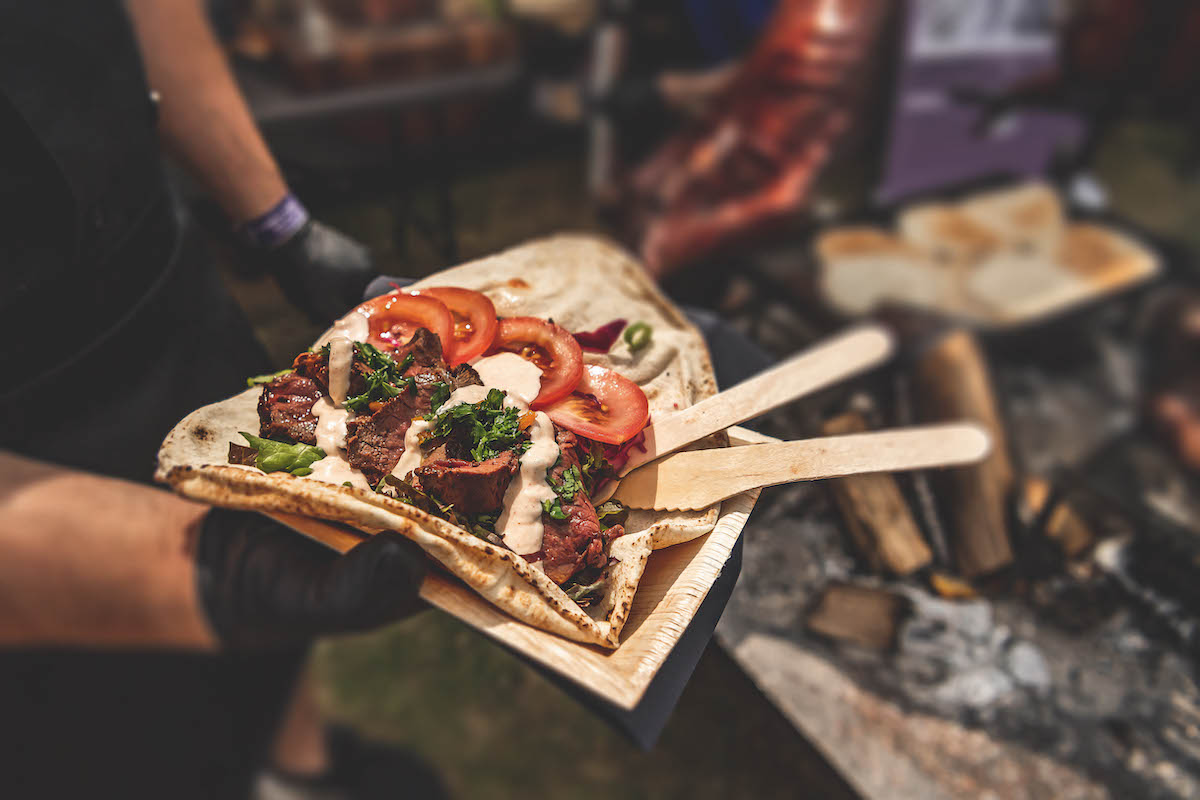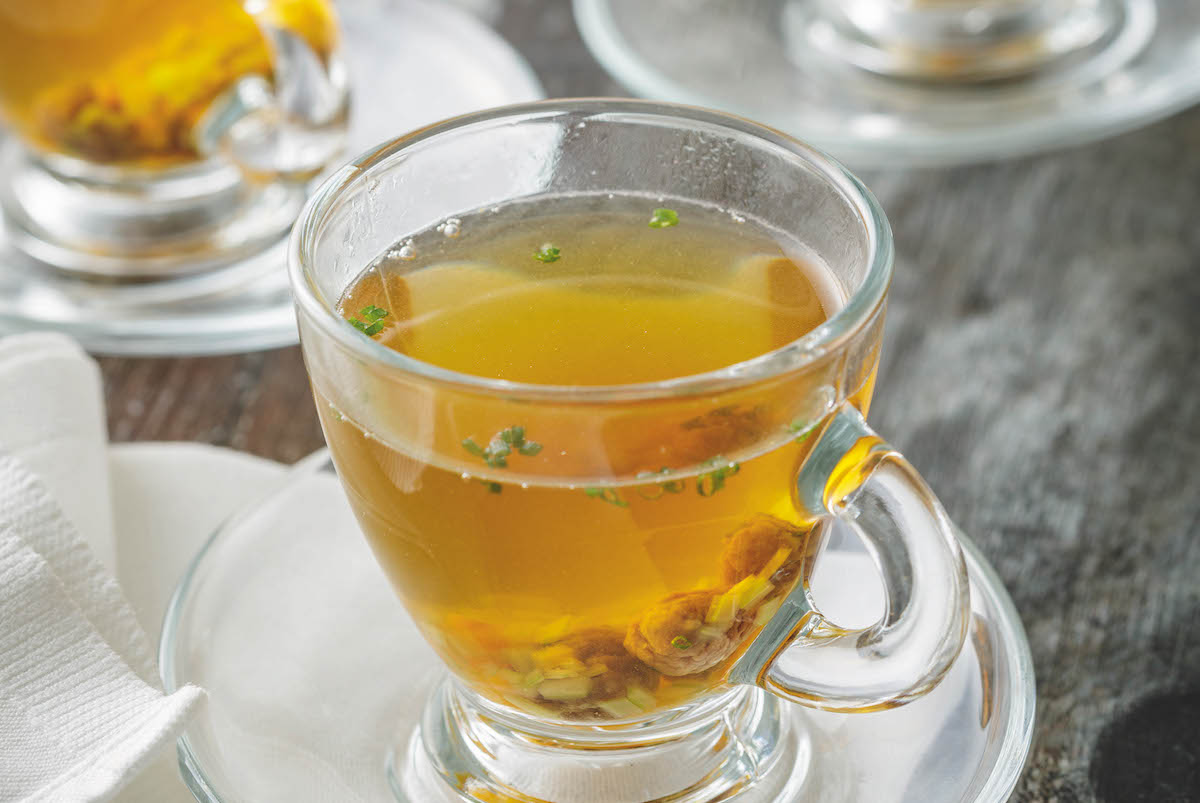Venison chorizo sausages with truffled polenta
Good deer management is essential to keeping roe herds healthy and it provides the ideal venison for succulent sausages, says José Souto. Makes 10-15 sausages.

Venison and chorizo sausages
Roe is a fantastic venison and is ideal for making sausages. (Read more on which deer species offer the best tasting venison?)
Venison chorizo sausages with truffled polenta and a venison jus
Ingredients
- 1.5kg venison, coarsely minced
- 750g pork belly, coarsely minced
- Salt and Pepper
- 80g smoked paprika
- 3 tsp garlic powder
- 200g crushed ice
- 250g natural sausage skins
- 500g ready-to-use polenta
- 150ml chicken stock
- A good drizzle of truffle oil
- Oil for frying
- 2 tsp Chives, chopped
- 200ml venison jus or gravy
Method
- Chill the meat well, then mince coarsely. Add the salt, pepper, smoked paprika, garlic powder and crushed ice to the meat and mix until all the ingredients are evenly dispersed.
- Place the minced meat into a sausage machine and force into the skins, then link into sausages.
- Dice the polenta, and in a large saucepan bring the chicken stock to a simmer. Add the diced polenta to the stock, stirring it in on the stove to warm it through.
- Season the polenta and add the truffle oil to taste. Keep mixing well, then keep warm. Preheat the oven to 200°C.
- Pan fry the sausages in a little oil to colour the outside, then place into the preheated oven for 8 minutes.
- Once the sausages are cooked, add the chives to the polenta, then serve with the jus or gravy.
The story behind this recipe for venison chorizo sausages
Several years ago, I had a permission in Norfolk with a large number of roe deer. During my stalking, I noticed that a lot of bucks had badly formed antlers. One of the typical traits in the area was bucks that had one antler much longer than the other — sometimes by as much as 3in. The bucks were also small, skinny and far from prime examples of healthy roe.
The antlers meant that, during the rut, they didn’t interlock. This, in turn, meant the ‘lesser’ bucks would be able to swipe around and spike their opponent, giving them an advantage. The term ‘murder buck’ usually applies to a male with no tines, but the end result was the same with these beasts. Essentially, lesser beasts were more able to kill or fend off challengers and pass on their poor genes. It was something we needed to correct if we wanted to improve the animals on the ground.
I took out a fair few of these bucks but not before I witnessed the catastrophic impact they could have on good-quality bucks. I recall watching one such stunning roebuck on the edge of a thick blackthorn hedge, sparring with one of the lesser bucks. They postured for a while, prancing and stamping to assess the other’s worth as an opponent. The older buck, with his set of well-formed antlers, strode elegantly, lifting his legs high like a champion dressage horse. He circled the young pretender before launching head first to meet him.
As they clashed and shoved violently back and forth, it was clear that the youngster was well outclassed. But then his antlers disengaged and he came around the side of the older buck, hitting him squarely in the chest. The old buck pulled away, stumbling as he retreated. This gave me a chance as the young buck stood in the clear, and I took him with a clean shot to the neck.
Unbeknown to me, however, further damage had been done, and five days later I saw the good buck in the same area. He was walking awkwardly and seemed to have problems breathing. I studied him for a while before making the decision to cull the injured animal. After recovering the carcass, I could see a deep wound to the chest — it was infected and he would not have lasted many more days.
This was a massive loss for the improvement of roe in the area but shows why good deer management is so important to ensuring the strongest bloodlines succeed.








